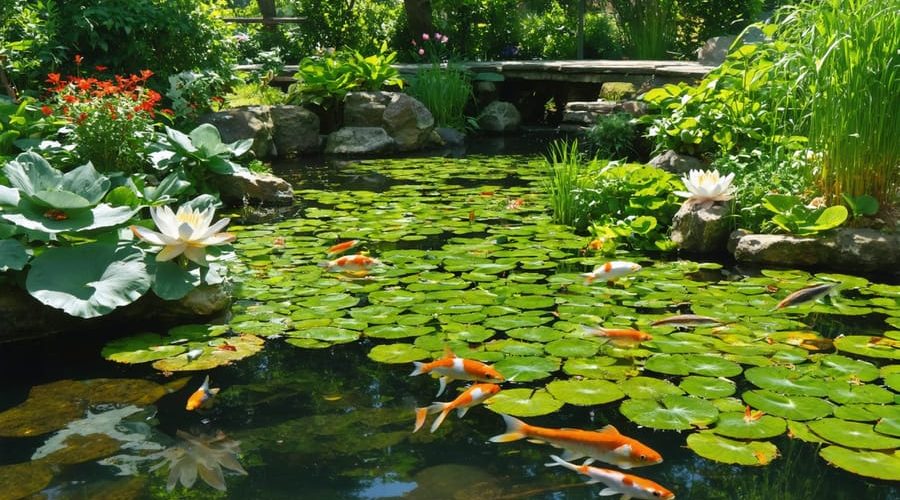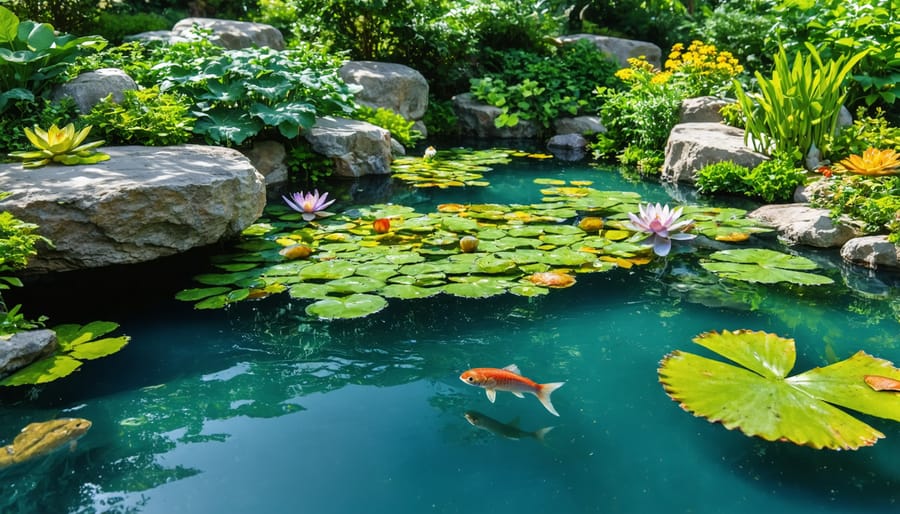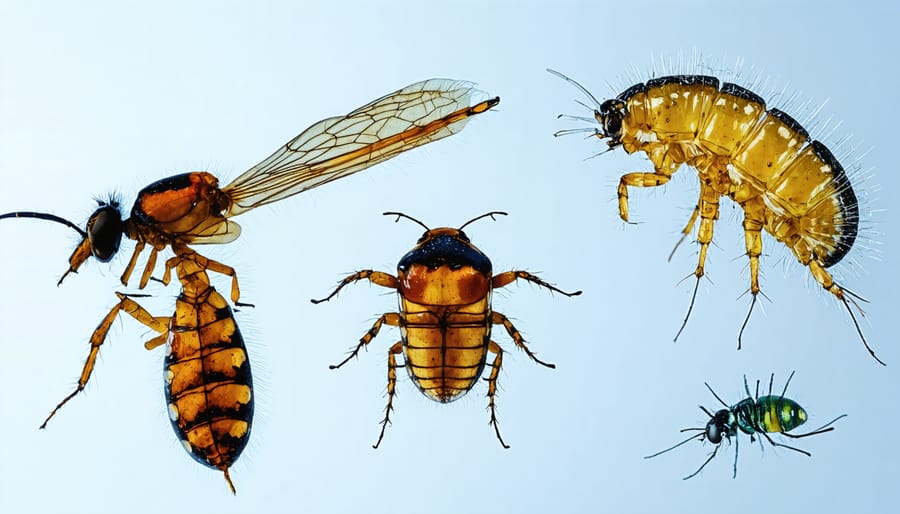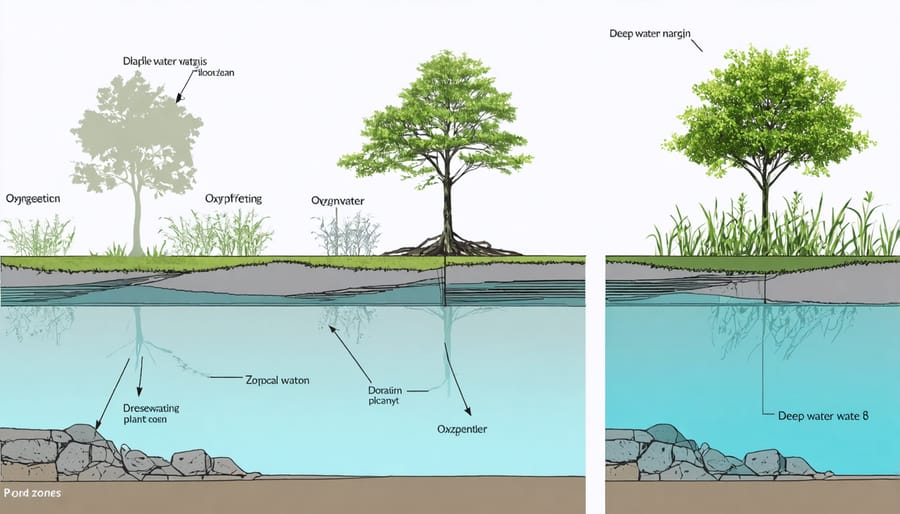
Why Your Pond’s Biodiversity Makes or Breaks Your Water Garden
Biodiversity valuation transforms ordinary ponds into thriving aquatic ecosystems, delivering both ecological and economic benefits for pond owners. Beyond the visible beauty of diverse plant and animal life, a well-balanced pond ecosystem provides natural filtration, reduces maintenance costs, and creates resilient environments that self-regulate. This natural approach to pond management has gained recognition not just for its aesthetic appeal, but for its measurable impact on property values and reduced long-term maintenance requirements.
For pond enthusiasts and homeowners, understanding biodiversity valuation means recognizing how each species – from beneficial bacteria to predatory fish – contributes to the pond’s overall health and stability. When properly managed, these diverse communities work together, creating a sustainable system that requires minimal intervention while maximizing enjoyment and environmental benefits. This practical approach to pond management represents a shift from traditional, chemical-dependent methods to a more natural, cost-effective strategy that enhances both the ecological and financial value of your water feature.
As water gardeners increasingly embrace natural methods, biodiversity valuation has emerged as a cornerstone of successful pond management, offering a blueprint for creating vibrant, self-sustaining aquatic environments that benefit both wildlife and owners alike.

The Real Value of Your Pond’s Living Network
Plant Life: Your Pond’s Natural Filter
Plants are your pond’s hidden heroes, working tirelessly as a powerful natural filtration system. Marginal plants, like iris and rush, create a beautiful border while their roots trap excess nutrients and provide shelter for beneficial microorganisms. These plants act as nature’s water purifiers, helping maintain crystal-clear water.
Floating plants, such as water lilies and lotus, offer more than just eye-catching blooms. Their broad leaves shade the water, preventing excessive algae growth by limiting sunlight penetration. They also compete with algae for nutrients, naturally keeping these unwanted guests in check.
Don’t forget about submerged plants like hornwort and anacharis! These underwater champions produce oxygen during the day, supporting fish life and maintaining healthy water conditions. Their dense growth provides hiding spots for small fish and creates natural barriers that trap debris.
For the best results, aim for a mix of all three plant types. Start with a few marginal plants along the edges, add some floating beauties for surface coverage, and include submerged varieties for underwater balance. As your plants establish themselves, you’ll notice improvements in water clarity and overall pond health. Remember to maintain about 60% plant coverage of your pond’s surface for optimal results.
Fish and Microorganisms: The Hidden Heroes
When you look into your pond, you might see fish swimming gracefully, but there’s much more happening beneath the surface! Fish and microscopic organisms work together in a fascinating partnership that keeps your pond healthy and thriving.
Fish, particularly koi and goldfish, do more than just look pretty. They help circulate water as they swim, preventing stagnation and promoting oxygen flow. Their natural foraging behavior stirs up the bottom sediment, which helps beneficial bacteria access more nutrients. Plus, fish waste, while it might seem unpleasant, actually provides essential nutrients for plants and helps feed the beneficial bacteria.
Speaking of bacteria, these tiny heroes are the true workhorses of your pond’s ecosystem. Different types of beneficial bacteria perform various crucial tasks. Some break down fish waste and dead plant material, while others convert harmful ammonia into less dangerous compounds. This process, known as the nitrogen cycle, is essential for maintaining clean, healthy water.
Algae, often considered a nuisance, actually plays a vital role when kept in balance. It provides food for small organisms, which in turn feed your fish. This natural food web creates a self-sustaining ecosystem that requires less intervention from you.
Remember, a balanced pond isn’t necessarily crystal clear – it’s teeming with life at every level, from the fish you can see to the beneficial microorganisms you can’t!

Building Your Pond’s Biodiversity from Scratch
Selecting the Right Mix of Species
Creating a thriving pond ecosystem starts with choosing the right combination of plants and fish that work together harmoniously. Think of your pond as a natural community where each species plays a vital role in helping pond plants thrive and maintaining water quality.
For plants, aim for a mix of different types: floating plants like water lilies for surface coverage, oxygenating plants such as hornwort for water quality, and marginal plants like iris for edge beauty. A good rule of thumb is to cover about 60% of your pond’s surface with plants, balancing between different varieties.
When selecting fish, consider their adult size and compatibility. Start with hardy species like goldfish before introducing more delicate varieties. Koi are beautiful but remember they can disturb plant roots, so protect your aquatic plants accordingly. Don’t overstock – a general guideline is one inch of fish per square foot of surface area.
Layer your biodiversity vertically too. Include shallow shelves for marginal plants, deeper zones for fish, and varied depths in between. This creates multiple habitats within your pond, supporting different species’ needs.
Remember to introduce species gradually. Start with plants and let them establish before adding fish. This gives your pond time to develop beneficial bacteria and create a stable environment. Watch how species interact and adjust your mix if needed – successful pond biodiversity is about finding the right balance for your specific situation.
Creating Diverse Habitats
Creating diverse habitats within your pond is like designing a neighborhood where different species can thrive in their preferred environments. Start by varying the depth of your pond – shallow margins (2-6 inches deep) provide perfect spots for marsh plants and tadpoles, while deeper zones (2-4 feet) offer fish safe spaces for winter hibernation.
Include gently sloping edges to create natural transition zones. These gradual slopes allow wildlife to easily enter and exit the pond, making it more accessible for creatures like frogs and newts. Add flat rocks around the edges to create basking spots for amphibians and resting places for birds.
Plant diversity is crucial – include submerged plants for oxygenation, floating plants for shade and shelter, and marginal plants for pond edges. Create mini-islands or plant shelves at different heights to accommodate various plant species. Consider adding logs or branches near the water’s edge to create microhabitats for insects and small creatures.
Don’t forget about the pond bottom! Use different substrates like gravel, sand, and larger rocks to create varied textures. This supports different types of beneficial bacteria and provides spawning grounds for fish. Leave some areas naturally muddy – these zones are perfect for aquatic insects and snails.
Remember to maintain open water areas too. These spaces are essential for water circulation and allow flying insects like dragonflies to patrol their territory.

Monitoring and Maintaining Your Living Ecosystem
Signs of a Healthy Ecosystem
A thriving pond ecosystem reveals itself through several key signs of pond health that are easy to spot. Look for a variety of insects dancing above the water surface, including dragonflies and damselflies, which indicate good water quality. Healthy plants should show vibrant growth without excessive algae, with different species thriving at various depths. You’ll notice frogs and beneficial bacteria working together to maintain balance, while fish appear active and display natural behaviors.
Water clarity is another positive indicator – you should be able to see at least 12-18 inches deep in your pond. Listen for the gentle sounds of wildlife, from bird visitors to the peaceful croaking of frogs, especially during evening hours. The water should have a fresh, natural smell rather than any unpleasant odors.
A diverse population of beneficial microorganisms helps break down debris, keeping the water clean and supporting the entire ecosystem. When these elements work in harmony, your pond becomes a self-sustaining paradise that requires minimal intervention to maintain its natural beauty.
As pond enthusiasts and nature lovers, we’ve explored the incredible value that biodiversity brings to our water gardens and the broader environment. From creating thriving ecosystems that sustain various forms of life to enhancing the natural beauty of our outdoor spaces, biodiversity is truly the cornerstone of a healthy pond environment.
By understanding and promoting biodiversity in our ponds, we’re not just creating beautiful water features – we’re becoming stewards of nature. Each plant we add, each habitat we create, and each sustainable practice we implement contributes to the bigger picture of environmental conservation.
Now it’s your turn to take action! Start small by introducing native plants, creating varied water depths, or adding natural shelters for wildlife. Remember, every pond, no matter its size, can become a sanctuary for life and a contribution to local biodiversity.
Share your experiences with fellow pond enthusiasts, learn from each other, and celebrate the positive changes you observe. Together, we can create vibrant, living ecosystems that bring joy to our gardens while supporting the delicate balance of nature for generations to come.
